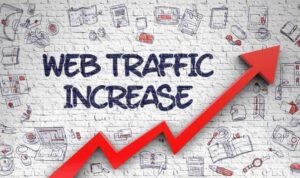Understanding CPC and CPM is like navigating the cool kids’ world of online advertising, where every click and impression counts. Get ready to uncover the secrets behind these ad models in this hip exploration.
Let’s break down the differences, factors influencing rates, and strategies to maximize ROI – all in a trendy, high school style that’ll leave you wanting more.
Understanding CPC and CPM

When it comes to online advertising, understanding CPC (Cost Per Click) and CPM (Cost Per Mille) is crucial for optimizing ad campaigns and maximizing ROI.
CPC (Cost Per Click)
CPC is a pricing model where advertisers pay for each click on their ads. The cost is calculated based on the number of clicks received, regardless of how many times the ad is displayed.
- Example: A company running a Google Ads campaign pays $1 for every click their ad receives on the search engine results page.
CPM (Cost Per Mille)
CPM refers to the cost per thousand impressions, where advertisers pay for every 1,000 impressions of their ad. The cost is calculated based on the number of times the ad is shown, regardless of clicks.
- Example: A business paying $5 CPM would pay $5 for every 1,000 times their ad is displayed on a website.
When to Use CPC vs. CPM
Choosing between CPC and CPM depends on the advertising goals and target audience. CPC is ideal for direct response campaigns aiming for clicks, while CPM is more suitable for brand awareness and visibility.
Advantages and Disadvantages of CPC and CPM Models
- CPC Advantages: Allows for precise tracking of ROI, targets users actively interested in the ad, and can be cost-effective for high-converting ads.
- CPC Disadvantages: May lead to higher costs if clicks do not convert, limited visibility for the ad, and may require ongoing optimization.
- CPM Advantages: Increases brand visibility, cost-effective for increasing ad exposure, and can reach a broader audience.
- CPM Disadvantages: Limited control over who sees the ad, no guarantee of clicks or conversions, and may be less effective for direct response campaigns.
Differences between CPC and CPM: Understanding CPC And CPM
In the world of digital advertising, understanding the differences between CPC (Cost Per Click) and CPM (Cost Per Mille) is crucial for advertisers looking to maximize their ROI and reach their target audience effectively.
Pricing Structure
- CPC: Advertisers pay each time a user clicks on their ad, regardless of how many times the ad is displayed.
- CPM: Advertisers pay for every 1,000 impressions of their ad, regardless of how many clicks it receives.
Impact on Budgeting Strategies
- CPC: Allows advertisers to only pay when a user engages with their ad, making it easier to track the effectiveness of their campaign and adjust budget accordingly.
- CPM: Provides a predictable cost for a set number of impressions, allowing advertisers to plan their budget more effectively for broader brand awareness campaigns.
Ad Performance and ROI
- CPC: Can directly impact ROI by measuring the number of clicks generated and the resulting conversions, providing a clear indication of the ad’s effectiveness.
- CPM: Focuses on brand visibility and reaching a larger audience, which can indirectly impact ROI by increasing brand awareness and potentially influencing future purchasing decisions.
Real-World Scenarios
- CPC: Ideal for direct response campaigns where the goal is to drive immediate actions, such as sales or sign-ups.
- CPM: More suitable for branding campaigns aimed at increasing overall brand awareness and visibility within a specific target audience.
Factors influencing CPC and CPM
When it comes to digital advertising, there are several key factors that can influence CPC and CPM rates. Understanding these factors is crucial for advertisers looking to optimize their campaigns and maximize their ROI.
Ad Relevance and Quality Score
Ad relevance and quality score play a significant role in determining CPC and CPM rates. Search engines like Google use quality score to evaluate the relevance and quality of ads. A higher quality score can lead to lower CPC rates, as search engines reward ads that are relevant to users’ queries.
Targeting and Ad Placement
Targeting and ad placement are also important factors that can impact CPC and CPM pricing. By targeting the right audience and placing ads in strategic locations, advertisers can increase the likelihood of engagement and conversions. This, in turn, can lead to lower CPC rates and higher CPM rates.
Competition and Industry Trends
Competition and industry trends can have a significant impact on CPC and CPM pricing. In highly competitive industries, advertisers may need to bid higher to secure ad placements, resulting in higher CPC rates. Additionally, changes in industry trends can affect the demand for ad space, influencing CPM rates.
Maximizing ROI with CPC and CPM

To make the most out of your CPC and CPM campaigns, it’s crucial to implement strategies that optimize your ROI. By focusing on improving performance and increasing brand visibility, you can ensure that your advertising efforts are yielding the best results possible.
Optimizing CPC Campaigns
- Utilize targeted s: By using relevant s in your ads, you can attract a more specific audience that is likely to convert.
- Optimize landing pages: Make sure your landing pages are aligned with your ad content to provide a seamless user experience and increase conversion rates.
- Monitor and adjust bids: Regularly review your CPC bids and adjust them based on performance data to maximize your ROI.
Improving CPM Performance
- Create compelling ad creatives: Design visually appealing and engaging ads to capture the attention of your target audience and increase brand visibility.
- Target the right audience: Use audience targeting options to reach the most relevant users for your ads and improve CPM performance.
- Test different ad formats: Experiment with various ad formats to see which ones resonate best with your audience and drive higher engagement rates.
A/B Testing for CPC and CPM Ads, Understanding CPC and CPM
- Run simultaneous A/B tests: Test different ad variations to identify which ones perform best and allocate your budget accordingly for optimal results.
- Focus on one variable at a time: When conducting A/B tests, change one element at a time (such as messaging or visuals) to accurately determine what drives better performance.
- Analyze and iterate: Use the data from A/B tests to make informed decisions and continuously refine your CPC and CPM campaigns for better effectiveness.
Tracking and Analyzing Metrics
- Use tracking tools: Implement tracking tools like Google Analytics to monitor key metrics such as click-through rates, conversion rates, and ROI for your CPC and CPM campaigns.
- Set clear goals: Establish specific goals for your campaigns and regularly review metrics to measure success and make necessary adjustments for improvement.
- Compare performance over time: Analyze historical data to track trends and patterns in campaign performance, allowing you to make data-driven decisions for optimizing ROI.





